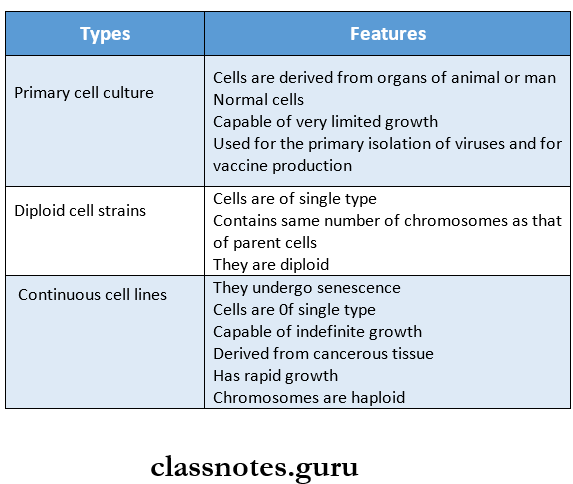General Properties Of Viruses: Important Notes
1. Features Of a Virus
- Lacks enzymes required for protein and nucleic acid synthesis
- Do not possess cellular organization
- Contains only one type of nucleic acid
- Multiply by a complex process
Read And Learn More: Microbiology Question and Answers
2. Structure Consists Of
- Genome
- Capsid
- Envelope
3. Cultivation Of Virus
- Animal inoculation
- Embryonated egg inoculation
- Tissue culture
4. Classification Of Virus
- Enveloped and non-enveloped viruses
- Based on their affinity for a different system
- Thermotropic
- Neurotropic
- Pneumotropic
- Viscerotropic
General Properties of Viruses Essay Questions
General Properties Of Viruses: Long Essays
Question 1. Explain the methods of isolation of viruses.
Answer:
Methods employed for the cultivation of viruses are
- Animal inoculation.
- Embryonated egg inoculation.
- Tissue culture.
- Organ culture
- Explant culture
- Cell culture
- Animal Inoculation Uses:
- Primary isolation of certain viruses
- To study viral oncogenesis
- To study the pathogenesis of certain viruses.
- Animals used are
- Mice – for arboviruses and coxsackie virus
- Guinea pigs.
- Rabbits
- Routes Of Inoculation Used
- Intracerebral
- Sub-cutaneous
- Intraperitoneal
- Intranasal
- Steps
- Inoculation of animals
- Observation of animals for signs of disease
- Animals are killed
- Their tissues are tested for the presence of the virus
- Embryonated Egg Inoculation:
- Embryonated hen’s eggs are inoculated by different routes

- Tissue Cultures:
- Cell Culture:
- Routinely employed for diagnostic virology.
- Tissues are dissociated into the component cells by the action of proteolytic enzymes such as trypsin.
- Cell cultures are classified into three types based on their origin and chromosomal characteristics.
- Cell Culture:

Virology Short Essay on Virus Structure and Function
General Properties Of Viruses: Short Essays
Question 1. Mention the characteristics of viruses.
Answer:
General Characteristics of Viruses:
- Viruses are the smallest obligate intracellular infective agents.
- Only one type of nucleic acid, either DNA or RNA, acts as their genomes.
- They have no metabolic activity outside the living cells.
- They do not possess a cellular organization.
- They lack the enzymes necessary for protein and nucleic acid synthesis.
- They do not grow in inanimate media.
- They are resistant to antibiotics.
- They multiplied by a complex process, but not by binary fusion.
- They are ultramicroscopic particles.
Properties of Viruses Class Notes PDF
General Properties Of Viruses: Short Questions and Answers
Question 1. Classification of viruses
Answer:
- Viruses are classified into two major groups based on the nucleic acid they possess
- They are:
DNA Viruses:
- Poxviridae family
- Herpes viridian family
- Adeno viridian family
- Pap ova viridian family
- Parvo viridian family
- Hepadna viridae family
RNA Viruses:
- Picorna viridae family
- Orthomyxo viridian family
- Paramyxoviridae family
- Toga viridian family
- Flavi viridian family
- Rhabdo viridian family
- Retro viridian family
- Corona viridae family
- Filoviridae family
